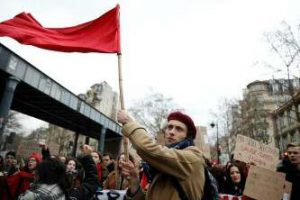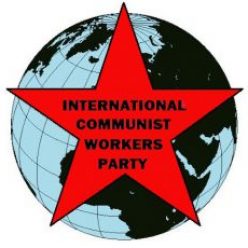The first article in this series showed how the Paris Commune, a major historical milestone, arose from the Franco-Prussian War (1870-71). It opened the era of working class world revolution. For the first time, workers took power and used it to organize and run society in their own interest. We build on their legacy by fighting for communism and nothing less: a world where the masses produce and distribute everything to meet their collective needs.
The masses who organized the Paris Commune saw they needed armed struggle to set up and defend their new society.
During the Prussian siege of Paris, the masses went hungry and died of disease while the rich drank champagne. The masses converted town halls into soup kitchens and closed-down theaters into Red Club centers that housed refugees and became forums for daily discussions. There, workers made a mass idea of the Commune as an alternative to capitalist power.
The Commune started a new way of living. They declared a moratorium on rent and prohibited evictions. They took over hotels to house those made homeless by the war and by Napoleon III’s destruction of their neighborhoods.
They encouraged workers to take over their workplaces. Women participated in all aspects of the Commune.
They freed education from the control of the Catholic Church, which they attacked for defending the rich and only teaching workers’ children to be wage slaves. They said that education and work should be combined for a person’s whole life: “A person who wields a tool must be able also to write a book with feeling and talent.” They insisted that girls should be educated as well as boys.
The National Guard Becomes a Workers’ Army
By 1871, the National Guard in Paris had grown to 340,000 troops. Many unemployed workers had joined for the small stipend. Others joined to defend Paris.
The Guard had elected their own officers for a hundred years, as a way to entice the rich to serve in the guard to defend France. But now that angry and hungry workers were joining in huge numbers, they chose leaders who represented the workers’ interests. Some were communists. National Guard units had constant mass political discussions.
In February, the Federation of the National Guard was formed. Seventy-two hundred delegates met and declared that “The National Guard must henceforth replace permanent armies which have only ever been instruments of despotism and which inevitably bring forth ruin of the country…The national citizen militia is the only national force, to the exclusion of any other.”
The French government became terrified of the Paris National Guard and the masses’ growing rebellion. On March 18 the French Army came for their cannons. But the Paris masses defeated the French Army, sending them back to Versailles.
Negotiations with the Bosses Weaken the Commune
The Blanquists, who were Marxists, argued for marching on Versailles immediately on March 19 to seize the initiative while many French troops and officers were still German prisoners. They urged the defeat of the French capitalists while calling on sympathetic soldiers and the workers throughout France to support the Commune. Unfortunately, they had not yet built a mass base for this strategy.
They were defeated by the more numerous followers of Proudhon, an anarchist who argued for setting up the Commune as a model of social transformation first while negotiating with the government. Instead of marching on Versailles, they held elections to the Commune Council.
But the rulers in Versailles had no intention of negotiating. They intended to crush the Commune and take Paris by force. Soon after the Commune began, the French government began attacking it and bombing the outskirts of Paris.
By the time the communards marched on Versailles, the French capitalists had regrouped. They had surrendered to the Prussians. In return, the German bosses, equally afraid of working-class insurrection, released thousands of captured French troops to attack the Paris Commune.
The communards held the French army at bay for two months, fighting battles every day. Finally, at the end of May, the French bosses’ army attacked Paris with 200,000 troops. They unleashed a campaign of murder and terror against the Parisian masses, aided by the German government and army.
During a week of intense fighting, the masses set up and bravely defended huge barricades, but there was no centralized plan. Between 3,000 and 10,000 communards were killed. Afterwards, tens of thousands more were executed on orders from the French government (supported by all other capitalist governments) to try to erase the memory of the Paris Commune.
The masses fought with fierce commitment to the Commune. But they lacked a clear centralized strategy based on the understanding that the capitalist state, the mortal enemy of the working class, must be eliminated and replaced by a communist society. And they lacked a mass communist party to lead their struggle.
When faced with imperialist war and mass starvation, the masses rose up, took power, and attempted to set up a society on communist principles. It is a beacon for the world’s workers today; its valuable lessons belong to the entire working class. This May Day, let’s Remember the Paris Commune and March for Communist Workers’ Power!

PARIS, March 29 — Tens of thousands of workers, teachers and students flood the streets in solidarity with rail workers who are disrupting France with intermittent strikes. They are protesting changes proposed by President Macron to the rail system, university admissions, and to unemployment and pension benefits. Rail workers in the United Kingdom have also walked out.
As the 50th anniversary approaches of the French worker-student uprising in “May 1968,” many are calling for a “May 2018.” If another objectively revolutionary situation develops, let’s take advantage of it this time by mobilizing masses for communism. More next issue!

